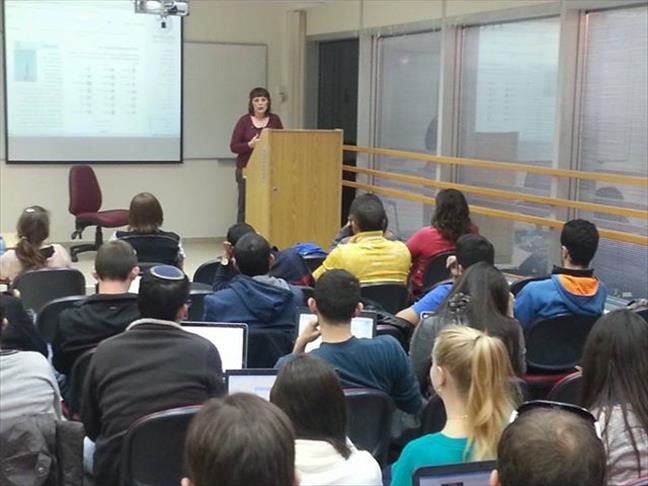Record number of foreign students in U.S. colleges
Number of international students studying in the US increased by 8 percent compared to last year, report says.

By M. Bilal Kenasari
WASHINGTON
The U.S. continues to be the top destination for foreign students pursuing a higher education, according to a report released Wednesday.
The report by Open Doors found that the number of international students rose to a record high of 886,052 during the 2013 -14 academic year, an 8 percent increase from a year earlier.
"The United States hosts more of the world’s 4.5 million globally mobile college and university students than any other country in the world, with almost double the number hosted by the United Kingdom, the second leading host country,” the report said, and comes during the 15th celebration of International Education Week that runs through Nov. 21.
International Education Week is a joint initiative by the U.S. State and U.S. Energy departments to “prepare Americans for a global environment and attract future leaders from abroad to study, learn, and exchange experiences in the United States,” according to the organization.
The number of international students in the U.S. has grown by 72 percent since the first International Education Week briefing was held in 2000.
In that time, the number of Chinese students increased fivefold, while the number of Indian students increased by two-and-a-half times, the report said.
“International education is crucial to building relationships between people and communities in the United States and around the world,” said Evan Ryan, Assistant Secretary of State for Educational and Cultural Affairs. “It is through these relationships that together we can solve global challenges like climate change, the spread of pandemic disease, and combatting violent extremism,” she added.
Students from China and Saudi Arabia combined for 73 percent of the growth, but a wider range of countries contributed to the increase where India, Brazil, Iran and Kuwait accounted for an additional 18 percent, due to state encouragement and scholarships.
After declining numbers in the last three years, the number of Indian students rose by 6 percent to 102,673.
During the current academic year, the number of Turkish student in the U.S. stood at 10,821, a decline of about 4 percent compared to the previous year.
South Korean student numbers also fell by 4 percent, and students from Taiwan decreased 3 percent.
There were also a large influx of students from countries whose governments have been investing in scholarship programs to send its students to study in the U.S.
Brazilian student numbers rose 22 percent to more than 13,000. There was a 21 percent increase in the number of students from Saudi Arabia, with nearly 54,000 students in the U.S., largely funded by the Saudi government scholarship program, now approaching its 11th year.
“We also need to expand access to international education for students from more diverse backgrounds, in more diverse locations of study, getting more diverse types of degrees," Ryan said.
"Only by engaging multiple perspectives within our societies can we all reap the numerous benefits of international education - increased global competence, self-awareness and resiliency, and the ability to compete in the 21st century economy," he added.
New York University was the leading host university for international students, surpassing the University of Southern California that held that distinction for 12 years.
Anadolu Agency website contains only a portion of the news stories offered to subscribers in the AA News Broadcasting System (HAS), and in summarized form. Please contact us for subscription options.

